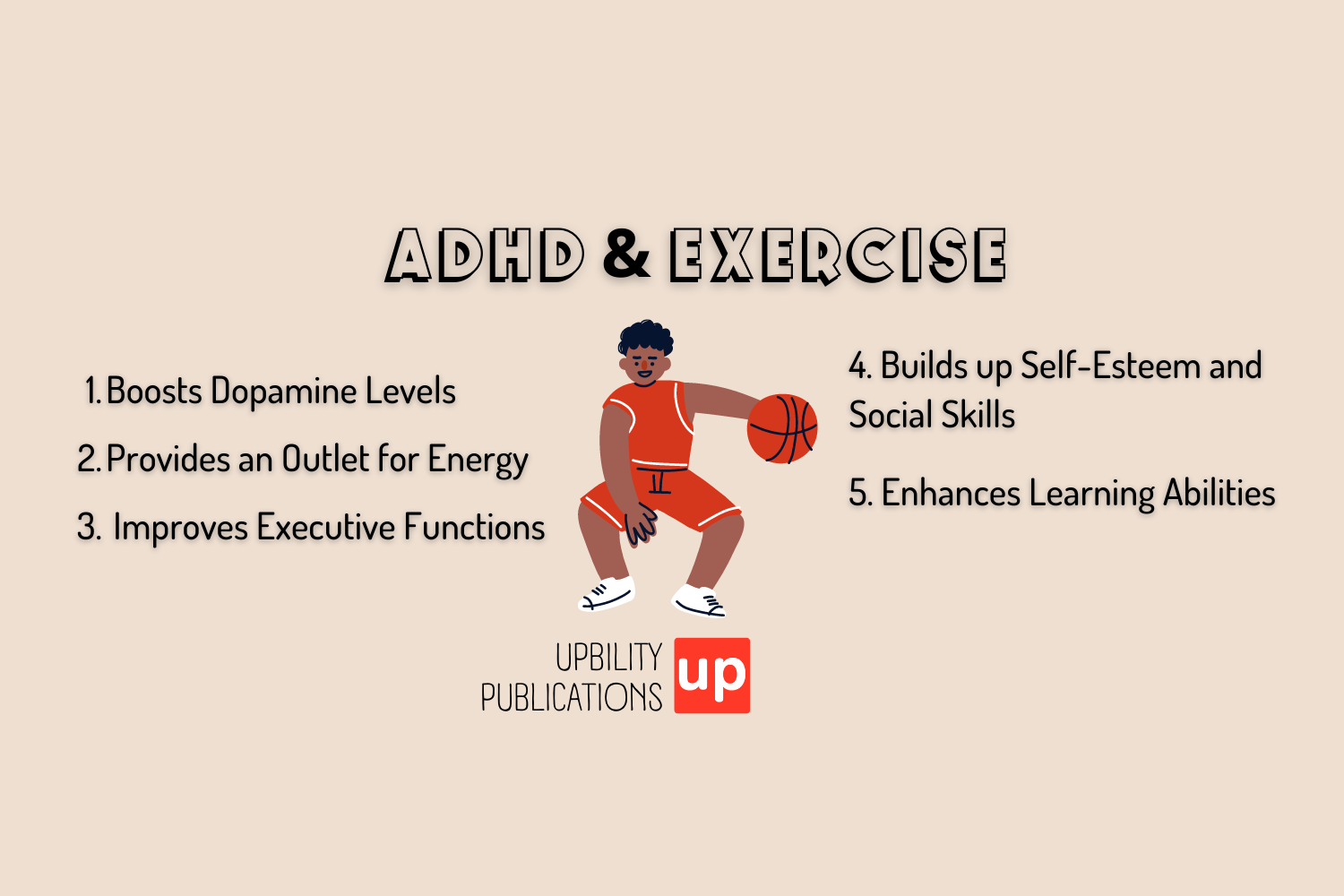The Link Between ADHD and Exercise: 5 Things To Know
The CDC recommends at least one hour of physical activity each day for children and teens. We know that regular exercise reduces the risk of chronic disease, obesity, and mental health disorders.
But what's the link between ADHD and exercise? While physical activity won't erase ADHD symptoms, it can help kids manage them. Here are five things you should know about the benefits of physical activity for ADHD.
1. Boosts Dopamine Levels
One of the proposed causes of ADHD is low dopamine levels in the brain. Stimulants are the go-to treatment for ADHD in adults because they raise dopamine levels. But what's a natural way to boost that feel-good chemical?
Exercise, of course! Not to mention the powerful effect physical activity has on other neurotransmitters. So sweating it out becomes a natural way to mimic the stimulants that balance neurotransmitter levels!
2. Provides an Outlet for Energy
Let's not forget the "hyperactivity" part of Attention-Deficit Hyperactivity Disorder. ADHD in children can often come out as restlessness, boundless energy, and impulse control problems. Studies have found that exercise can improve:
- Aggression
- Social issues
- Problematic thinking
- Depression
- Anxiety
The same study claimed that exercise led to calm behavior and higher attention spans. If nothing else, physical activity is a healthy way for kids to burn off energy and let out any stress they may have.
3. Improves Executive Functions
Children with ADHD often struggle with executive functions. These skills govern our daily lives and include memory, focus, and time management. The best way to get the benefits for executive function is by trying a variety of exercises for ADHD.
Team sports can help children develop self-control and working memory. Slow movement like yoga can improve self-monitoring and emotional control. Try to encourage your child to sample a medley of activities to boost executive functions!
4. Builds up Self-Esteem and Social Skills
The learning environment is often difficult for children with ADHD. Classes can be confusing, friendships difficult, and rules impossible to follow. Extracurricular activities are one solution for improving their school life through exercise.
After-school sports like soccer or baseball don't create the same pressure as a classroom. Your child might feel more secure in their role on the team. This sense of belonging can boost their self-esteem and help them form new friendships in a relaxed setting.
5. Enhances Learning Abilities
Speaking of trouble in the classroom, ADHD can affect your child's learning abilities. Neuroplasticity is critical in learning new things and responding to new stimuli. It's essentially the process of how our brain cells communicate with each other!
The good news is that research has consistently found that exercise enhances brain plasticity. So regular physical exercise might be a crucial component in improving learning abilities!
ADHD and Exercise: A Clear Connection
So does exercise help ADHD symptoms? The answer is a resounding yes! But one thing to remember about ADHD and exercise is the individual response.
Some children might find that physical activity significantly reduces their symptoms. Others might find it to be less effective. Regardless, they'll still feel the benefits of exercise, and that's never a bad thing!
Need more guidance for helping your child manage their ADHD diagnosis? Head over to the ADHD Collection at Upbility for more resources!
by Alice Kassotaki - Speech Language Pathologist MSc, BSc
copyright Upbility 2022
You can also read:
- Improve Your Child's Self-Esteem With Extracurricular Activities
- ADHD and Lying: The Reasons Why Kids With ADHD Are Prone to Lying
- Back to School: Making it Easier for Students With Learning Disabilities
- ADHD and Substance Abuse in Teenagers A Research
- 5 Tips For A Happy Summer For Kids With ADHD
- The Impacts Of Distance Learning A Review
Suggested Books on ADHD:









